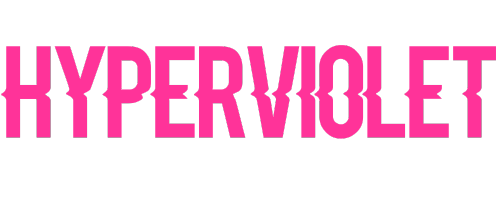Seeing Violet: Psychology Of The Colour Purple In Design
Written by Amy Walsh
Anyone in the design industry knows that a good logo means good business. Cadbury, one of the world’s most identifiable brands, boasts one of the most iconic logos ever made. Their unique shade of purple is recognisable across the globe, with Cadbury going so far as to have it trademarked. Why? Because the psychology behind the colour purple grants it unique branding power that, when utilised correctly, can lead to astounding marketing success.
Using purple in branding isn’t anything new, with major brands like FedEx, Yahoo, and even the Los Angeles Lakers cashing in on its unique associations. But what exactly is it that makes purple such a notable colour?
Let’s start with the basics. Purple is a secondary colour, comprised of the two spectral colours blue and red. Red and blue have their own psychological associations, but, due to its unique composition, purple has the advantage of being able to make the most of BOTH. The warmness of the red creates an intense energy that is associated with power, which is perfectly balanced by the coolness of its blue counterpart, to imbue a sense of stability and serenity.
What’s even better is that with some tonal experimentation you can alter the colour balance to create different psychological effects. Want a more feminine colour? Add more blue to make it a softer shade of violet. Want something that’s bolder? Add red to bring out its vivacity. Due to this flexibility, purple is often associated with visionary thinking, and who doesn’t want that to be the image of their brand? Cadbury, FedEx, Los Angeles Lakers, Yahoo, Milka, Hallmark, and Adobe InDesign clearly did, and it turned out pretty great for them.
One of the key psychological associations with purple is rarity, largely because it’s a colour that doesn’t occur by itself in nature. Subconsciously attracting the consumer, the colour purple perfectly embodies the “Isolation Effect”, a psychological principle that states that the more unique something is or the more it stands out from its environment, the more notable it is in the eye of the consumer. Funnily enough, the creation of synthetic purple only came about as an accidental by-product of a cure for malaria. Suffice to say the cure wasn’t successful, but it DID make life a lot easier for purple lovers, making the colour accessible to the general public. Previously, the only way to create the unique shade was to crush snail shells, which was an expensive process that only the rich could afford. This sparked its association with royalty and luxury, an association that still stands today.
Evoking mystery, inspiring creativity and representing passion, purple is a colour with diverse psychological associations, each of which your brand can use for its own success. Some of the biggest companies around the world have so what’s stopping you?
Recommended Reading: Cadbury's Purple Reign by John Bradley
Words by Amy Walsh



